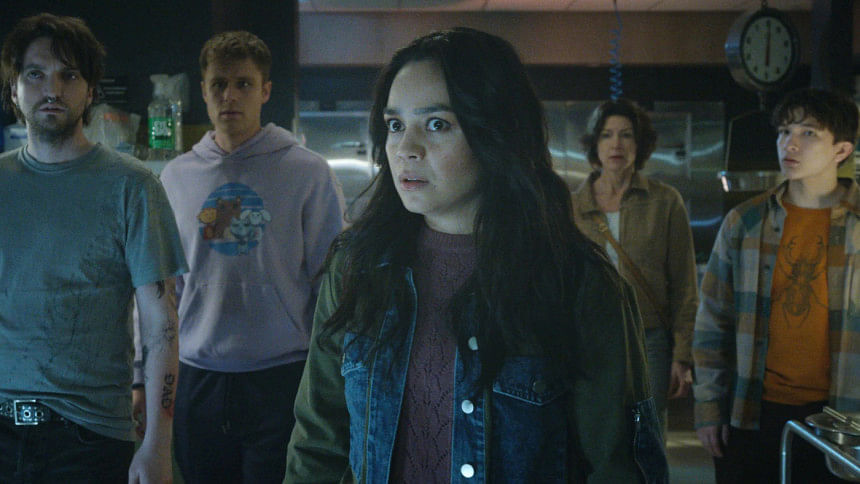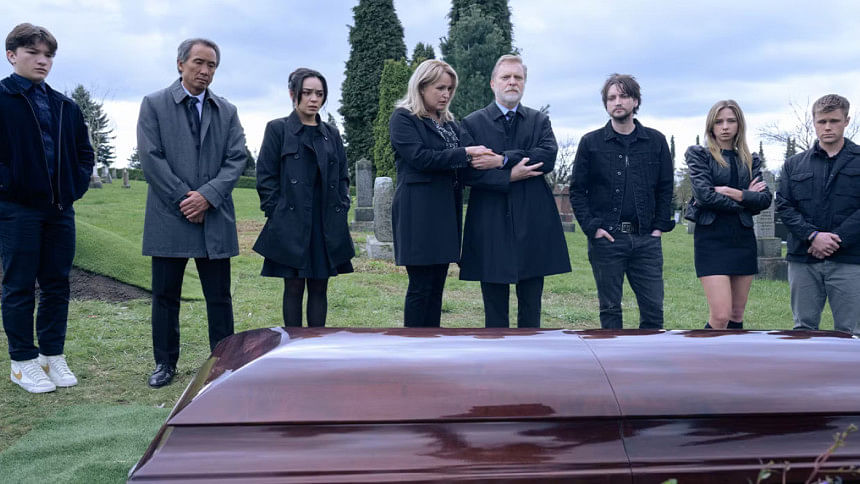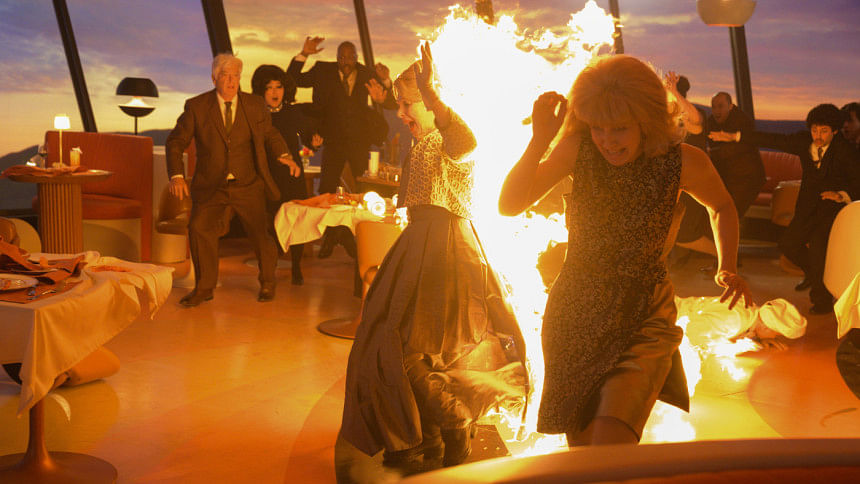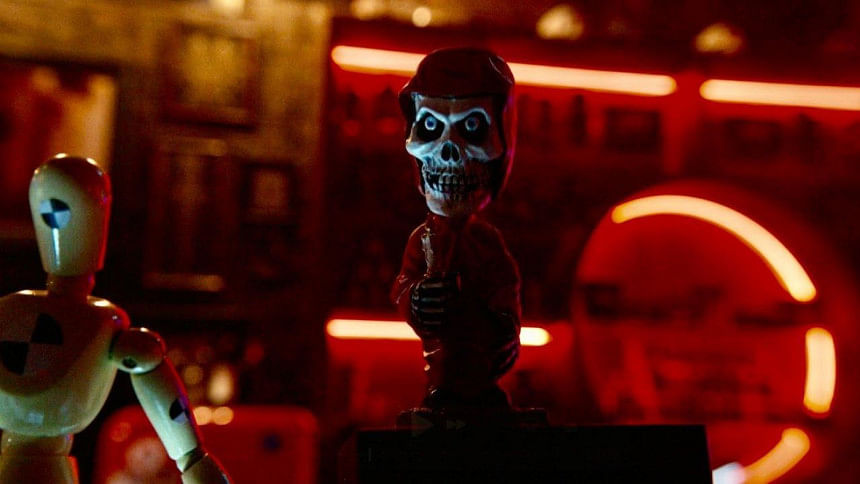‘Final Destination Bloodlines’ and the chaos of control

The "Final Destination" franchise has always had a sick sense of humour. Somewhere between the hairspray fireball of 2006 and the acupuncture impalement of 2011, it found a rhythm: ordinary objects, operating according to the most banal physics, and conspiring to kill one in the most humiliating way possible. "Final Destination Bloodlines", the sixth and arguably most coherent instalment in the series, refines this formula while also taking a jab at our belief in logic and order. Directed with unhinged precision by Zach Lipovsky and Adam Stein, and scripted by Guy Busick and Lori Evans Taylor, "Bloodlines" is a prequel-slash-sequel with both feet planted firmly in absurdity and emotional gravitas.
It begins in 1968, decades before Flight 180's ill-fated Paris attempt in the first film, with a high-rise restaurant disaster that sets a new bar for cinematic chaos. The set piece is so elaborate, so outlandishly choreographed, from the clink of a dropped penny to the plummeting of a thousand-pound piano onto a bratty child in a bowtie, that you half-expect Bugs Bunny to be lurking behind the curtains. But we cannot mistake the slapstick for stupidity. There is a method to this mayhem. "Bloodlines" is visually rich, emotionally resonant, and unapologetically cartoonish, which is precisely why it works. In fact, it might be the best "Final Destination" film yet, because it finally embraces what the franchise has always flirted with — not just fear of death, but a deeper anxiety about how death chooses its tools. No masked killer. No creaking attic. Just death playing with the laws of entropy, as its omniscient and ironic self.

Our central figure this time is Iris (played by Brec Bassinger), a wide-eyed 1960s romantic caught in the Skyview restaurant collapse that opens the film. Helping a toddler survive the cataclysm while tears glint against her teal party dress, Iris instantly establishes herself as a final girl with pathos. It is almost a shame that we promptly leap to the year 2025. Enter Stefani (Kaitlyn Santa Juana), a college student plagued by vivid dreams of her estranged grandmother Iris. After a scream interrupts her lecture, she is flung into a multi-generational mystery that ties her family and herself to death's elaborate design. The transition from dreamy 1960s idealism to contemporary existential dread is jarring, but thematically rich. Where previous "Final Destination" films treated characters like chess pieces, "Bloodlines" lets them argue, bond, and unravel as actual people. Stefani's quest to uncover her grandmother's past and survive her own unfolding fate feels personal and refreshingly intimate for a franchise built on anonymous carnage.
The ensemble, including Teo Briones, Richard Harmon, and Anna Lore as Stefani's skeptical cousins, injects new blood and genuine chemistry. These are not caricatures awaiting their turn on the kill wheel but interconnected people navigating loss, legacy, and really bad luck. In many ways, "Bloodlines" is the first "Final Destination" that understands families, not just fatalities. The real star of the show, however, is, as always, the death design, which earns the film its nuance. It's not ghosts, demons, or axe-wielding maniacs that make "Final Destination" terrifying; it's the horror of the mundane. These films turn the fabric of reality into a mousetrap: a ceiling fan, a stray coffee mug, a pair of scissors.

"Bloodlines" leans into this discomfort with gleeful malice. It does not just make you fear death; it makes you distrust gravity, plumbing, and basic ergonomics. That is a more primal fear than any poltergeist can muster; after all, we can rationalise a ghost. What is harder to digest is the idea that the universe is just an impartial Rube Goldberg machine, one shelf misaligned from annihilation, and this film elevates the formula. There is a slow-burning confidence in the way it allows cause and effect to snake through scenes, creating micro-tensions so sharp they border on comedy. We hold our breath as a wine glass trembles, a socket flickers, or a Roomba inches ominously close to a power cord. If there is anything more nerve-wracking than a ghost, it is the logic of probability and the idea that one almost died.
"Bloodlines" also plays with superstition more explicitly than past entries. The unlucky penny, a recurring motif, becomes a sort of cursed totem and a tangible representation of how arbitrary yet symbolic our brushes with fate feel. Death, the franchise seems to argue, is not just logical rather poetic. And if you are going to die horrifically, you may as well have the decency to do it with dramatic flair and metaphor. Tonally, Lipovsky and Stein strike an impressive balance between humour and horror. The film never devolves into parody, but it is self-aware in the best way. When a rude maître d' is denied entry onto a fateful elevator, or a character dies in what could be described as a baroque slapstick ballet, we laugh, but we also wince. It is the rare horror film that understands irony not just as comic relief, but as thematic punctuation.

Yes, there are flaws. A few late-stage CGI flourishes feel like they were borrowed from a deleted "Transformers" scene. One or two deaths stretch credibility even within the universe's elastic rules. Besides, for all its emotional ambition, the plot occasionally buckles under the weight of its generational backstory. Nonetheless, those are small dents in a machine that otherwise runs with diabolical precision. Then there is Tony Todd. As the enigmatic William Bludworth, Todd has been the soul, or at least the undertaker, of this franchise since its inception. In "Bloodlines", his presence feels especially poignant. Whether it is his last hurrah or not, the film treats his performance with reverence, allowing him to embody the franchise's enduring thesis: death is inevitable, but it also arrives in style.
Thus, therein lies the magic of "Bloodlines". It is not just another string of inventive kills. It is a sly meditation on fate, control, and the delusions we cling to in the face of chaos. It is a horror movie for people who flinch at butter knives, who fear not the ghost in the attic but the toaster on the counter. It is morbid, clever, and weirdly comforting because if we are all doomed, at least we can die laughing at the design.

 For all latest news, follow The Daily Star's Google News channel.
For all latest news, follow The Daily Star's Google News channel. 




Comments